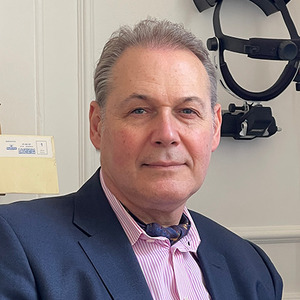Power List

Paulo Eduardo Stanga
Power List Profile
The Retina Clinic London - Director & Vitreoretinal Surgeon, Institute of Ophthalmology, University College London, UK
What is an interesting or little-known fact about you?
I am passionate about horse riding, polo, country sports, garden sculptures, and gardening.
Why did you decide to pursue ophthalmology/your subspecialty?
I originally considered being a plastic surgeon. However, after going through ophthalmology at university, I remained forever fascinated by the beauty of the intraocular anatomy of the eye – especially the vitreous and the retina, and I loved the challenge of vitreoretinal surgery.
Who is someone in ophthalmology/your subspecialty that you feel has been particularly influential over the past 10 years?
There have been many influential figures throughout my career, such as Hugo Nano, Harvey Lincoff, Alan Bird, Peter Hamilton, David Wong, and David McLeod. But specifically in the last 10 years, it would have to be John Marshall, Jerry Sebag, and Dan Reinstein.
What’s been the biggest breakthrough in ophthalmology/your specific field over the last 10 years?
The biggest breakthrough would have to be the commercial development of ultra-widefield imaging and navigated peripheral OCT. Both have been revolutionary in my daily practice for assessing, diagnosing, treating, and monitoring peripheral retinal disease and the vitreoretinal interface.
Is there a particular tool, technological advance, or instrument you would not have been able to live without over the past 10 years?
The indirect ophthalmoscope
Do you have any strong opinions with which the rest of the field tends to disagree?
I believe that symptomatic vitreous floaters should be treated given certain conditions are met. I also believe that every patient with symptomatic PVD should undergo widefield OCT to visualize the vitreoretinal interface and indirect ophthalmoscopy with 360 degree scleral indentation to visualize the retina up to the ora serrata.
What would you like to see change in ophthalmology/your subspecialty over the next 10 years – and why?
Increased use of indirect ophthalmoscopy with scleral indentation and access to ultra-widefield imaging and navigated peripheral OCT to ensure that the entire retina and the vitreoretinal interface are examined, as well as increased access to the existing promising therapies for geographic atrophy.
Where do you predict ophthalmology/your subspecialty will be 10 years from now?
Artificial Intelligence will assist the analysis of imaging and improve its accuracy of diagnosis and prognostic value.
Do you have any personal missions for the next 10 years?
To increase awareness of the need to better understand vitreous floaters, when treatment is needed for them, and the best treatment options. To increase awareness of the need to better understand – through navigated peripheral OCT – which peripheral retinal lesions require treatment.
Who would you invite to your dream dinner party?
Herbert von Karajan, Harry Flashman, Juan Carlos Harriott, James Hunt, Nicky Lauda, Juan-Manuel Fangio, and Field Marshal Bernard Law Montgomery.
